The Making of Brooklyn: Reinforced Concrete and Turner Construction
Turner Construction got its start in Brooklyn specializing in reinforced concrete.

Photo by Susan De Vries
Editor’s note: This story is an update of one that ran in 2015. Read the original here.
Imagine living in the far future, able to look back in time and watch when Roman engineers came up with the arch, or medieval church builders developed the flying buttress. Impressive stuff there — some of the foundations of modern Western architecture.
Centuries later, the greatest innovations were sometimes of a more humble nature. Did those early developers of reinforced concrete, which bonded the strength and flexibility of steel with the solidity of cast rock, know their experimentation would also change architecture?
Their work made it possible to build higher, larger and more inventively than anyone could imagine. It began in France in the 19th century, but it would take an American company, based in New York City, to build wonders across the world. This company had its first job here in Brooklyn.
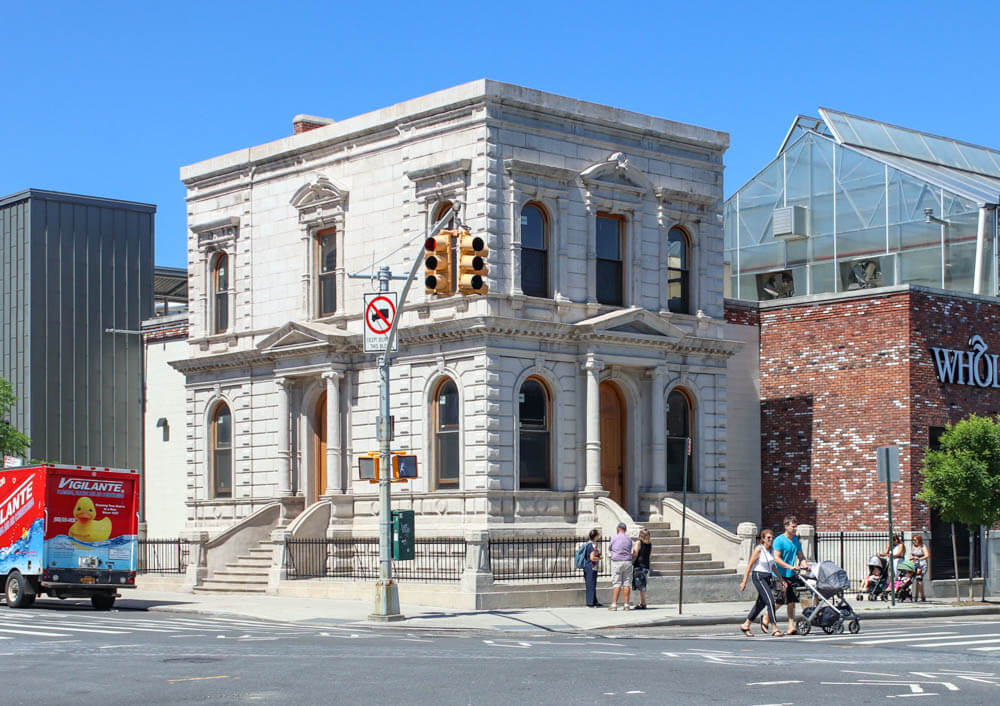
What is Reinforced Concrete?
The Romans first started using concrete, but its use languished over the centuries as stone and wood became more readily available. It wasn’t until the middle of the 19th century that European engineers and builders began experimenting with it again.
Concrete, on its own, can be harder than stone, but it is brittle. Steel is also hard and extremely strong, but it is tensile; it can move and adjust to outside pressures. Reinforced concrete is such a versatile building material because of the relationship between the two materials.
When the cement in the concrete hardens and adheres to the roughened surfaces of the steel — specifically, steel rebar embedded liberally throughout every concrete surface of the building — that union permits the stresses on the concrete to be transferred to the steel.
Extrapolated out to a high-rise, or a building of unusual shape, the stress loads within the reinforced concrete are transferred equally throughout the structure, creating a building that is extremely sturdy. It allows for exceptionally tall buildings, as well as graceful space-age and organic shapes.
François Coignet is generally credited with this new interest in cast and reinforced concrete, beginning in France in the 1850s. His methods would inspire the creation of the Coignet Company in Brooklyn, the first American company to produce and market cast concrete using his methodology.
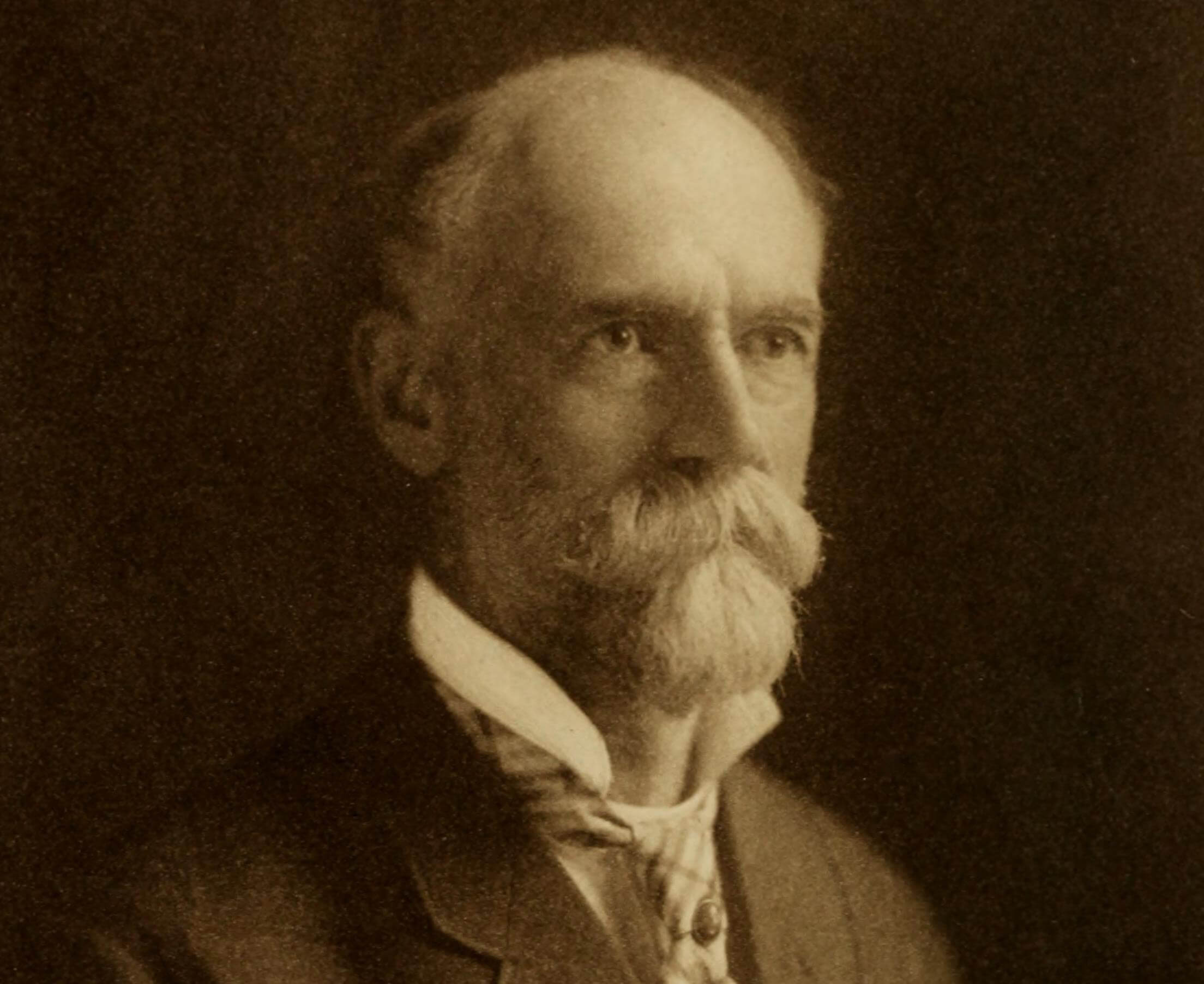
Other 19th-century innovators took his work, then improved and amplified it. One of them was an English engineer and architect named Ernest Ransome. His father, Frederick, also worked with concrete, and had patented his own manufactured stone in 1844, in England.
The younger Ransome came to the United States in the 1870s, settling in San Francisco. There he patented a method of laying reinforced concrete sidewalks in the 1880s. With that idea in mind, he began experimenting with ways of using reinforced concrete in building construction.
Ernest Ransome originated the design of twisted rebar, the basis of all reinforced concrete building construction. The twist makes the steel even stronger, and reinforces the bond between concrete and steel.
An Inspired Swarthmore Grad Comes on Board
The possibilities of this material were staggering; Ransome’s work flourished and inspired graduates of engineering and architectural programs to pursue careers in the field.
One of them was a recent Swarthmore graduate named Henry Chandlee Turner. He received his degree in civil engineering, then went to work at Ernest Ransome’s firm. He was employed there for over 10 years, helping to develop this new building technology.
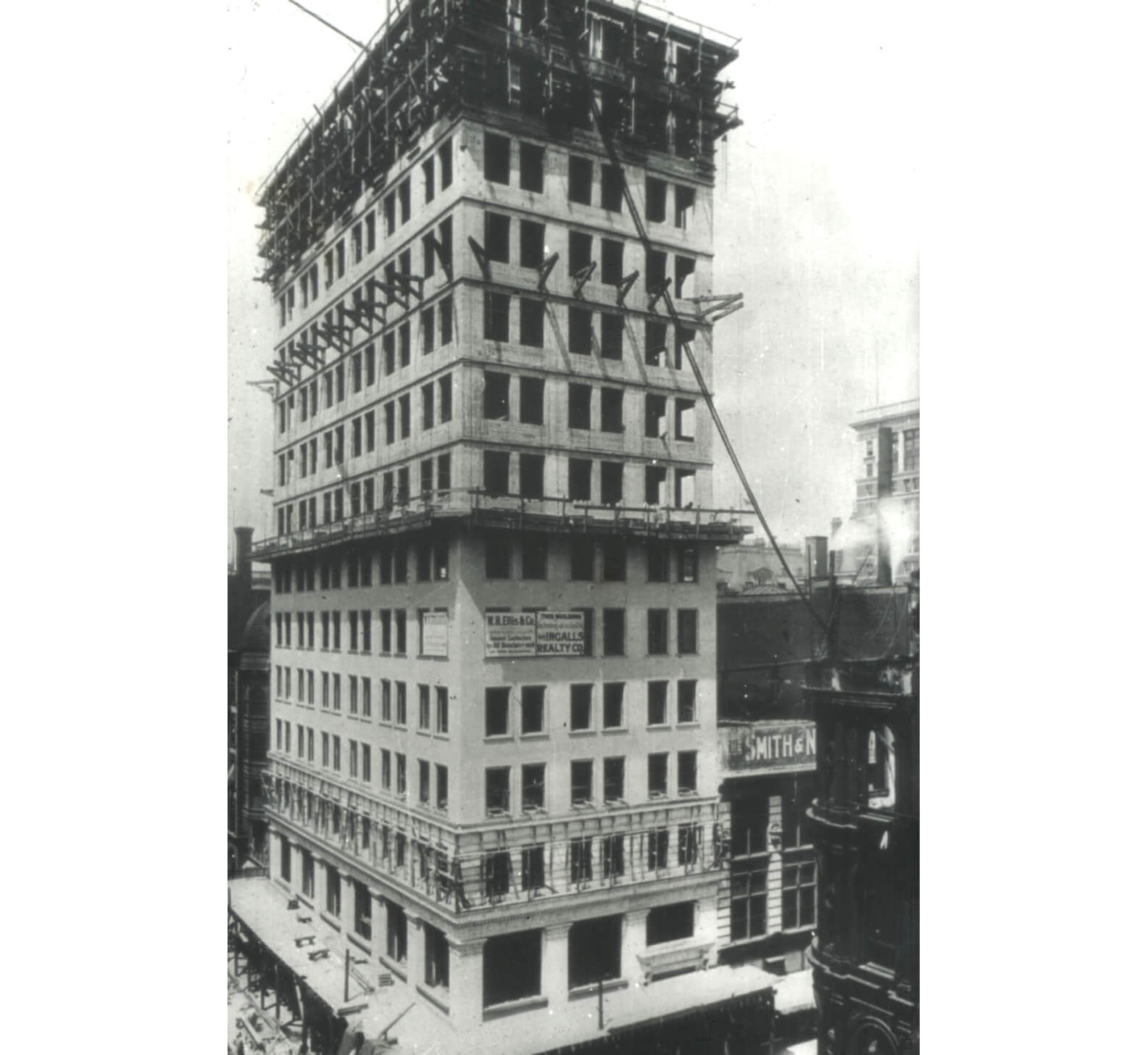
In 1886, Ransome built several overpass bridges in Golden Gate Park, as well as two experimental buildings on the campus of Stanford University. The bridges were the first reinforced concrete bridges in the country. All of the structures survived the San Francisco Earthquake of 1906, while everything else around them collapsed.
In 1903 he built the 15-story Ingalls Building in Cincinnati, Ohio, considered the first reinforced concrete skyscraper. It still stands. By that time, Henry Turner had left the company, and was out on his own.
Turner Construction Company’s Early Years in Dumbo and Beyond
Henry Turner started his construction company in New York with a nest egg of $25,000. His offices were at 11 Broadway, in the heart of Lower Manhattan, where an entirely new landscape was about to go up. Turner wanted to be at the center of it, and he knew reinforced concrete would be the wave of the future.
His first job, however, was less than the impressive start he may have wanted. He was hired to construct a concrete vault for Brooklyn’s Thrift Bank, part of Pratt Institute. He was paid $687.
But a year later, his efforts began to pay off. He landed a construction job with Robert Gair in what is now Dumbo. Scotsman Gair had made a fortune manufacturing boxes and the equipment that made and folded them. His corrugated cardboard boxes were used by just about every form of industry there was.
Gair moved his operations from Manhattan to Brooklyn, and through the recommendation of his son, hired Turner to build a new reinforced concrete factory building. The architect was William Higginson, a fellow Englishman.
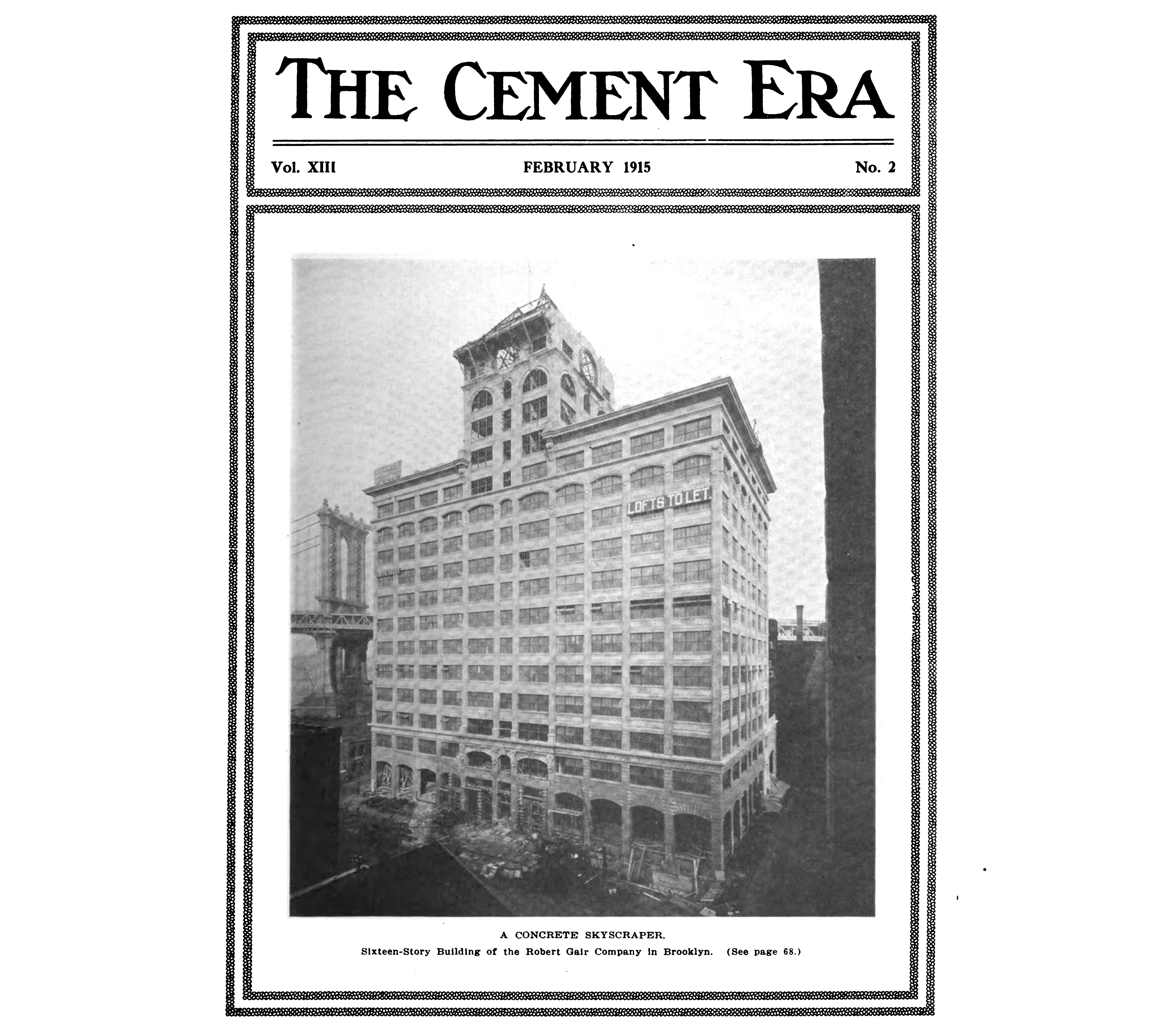
Higginson had to be convinced about reinforced concrete, but when he saw the light, he used it on all of the Gair buildings, as well as buildings for other clients. He also worked with Turner on most of them, including the enormous Bush Terminal buildings.
In 1904, Turner Construction finished the first reinforced concrete buildings for Gair, this one at 41-49 Washington Street. Several more floors were added over the years, and the top floors became the headquarters for the Gair Company.
At the same time, Turner was also working on a large contract for one of the new subway lines. They needed stairs to access the platforms from the street, as well as the platforms themselves. Originally, they were all supposed to be iron and steel, but Turner suggested reinforced concrete.
Successful tests were conducted to prove the worth of concrete. Using that information, Turner vastly underbid for the job and got it. His company built more than 50 train station platforms and stairs for the Interboro Rapid Transit line, the IRT.
Turner Construction never looked for work again. Reinforced concrete, as the building material of the future, took off like a rocket. All across the country, architects, engineers and builders began designing and building using reinforced concrete. Structures from garages to factories to skyscrapers were built in concrete.
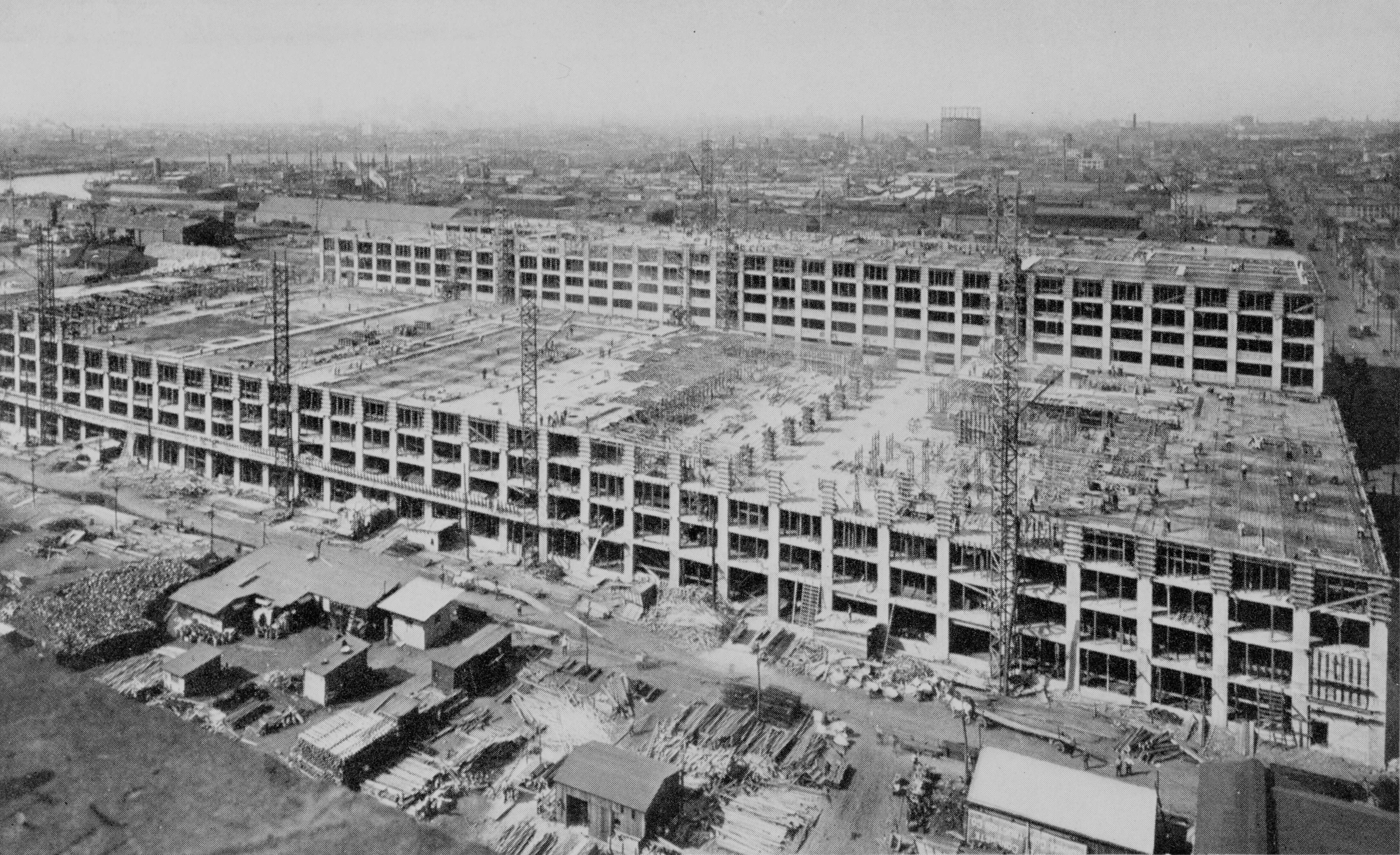
Turner Expands Its Brooklyn Footprint and Beyond
Since Henry Turner’s first job was in Brooklyn, it’s only fitting that one of his largest was also here — building the U.S. Army Supply base in Sunset Park in 1919, the largest reinforced concrete building in the United States.
Turner and many of his company’s officers and workers also lived in Brooklyn. He, his wife and their son lived at 28 Monroe Place in Brooklyn Heights. The great builder’s house no longer stands.
By 1919, his company had built more than 150 buildings in Brooklyn. If the building is reinforced concrete from around this time period, chances are Turner built it.
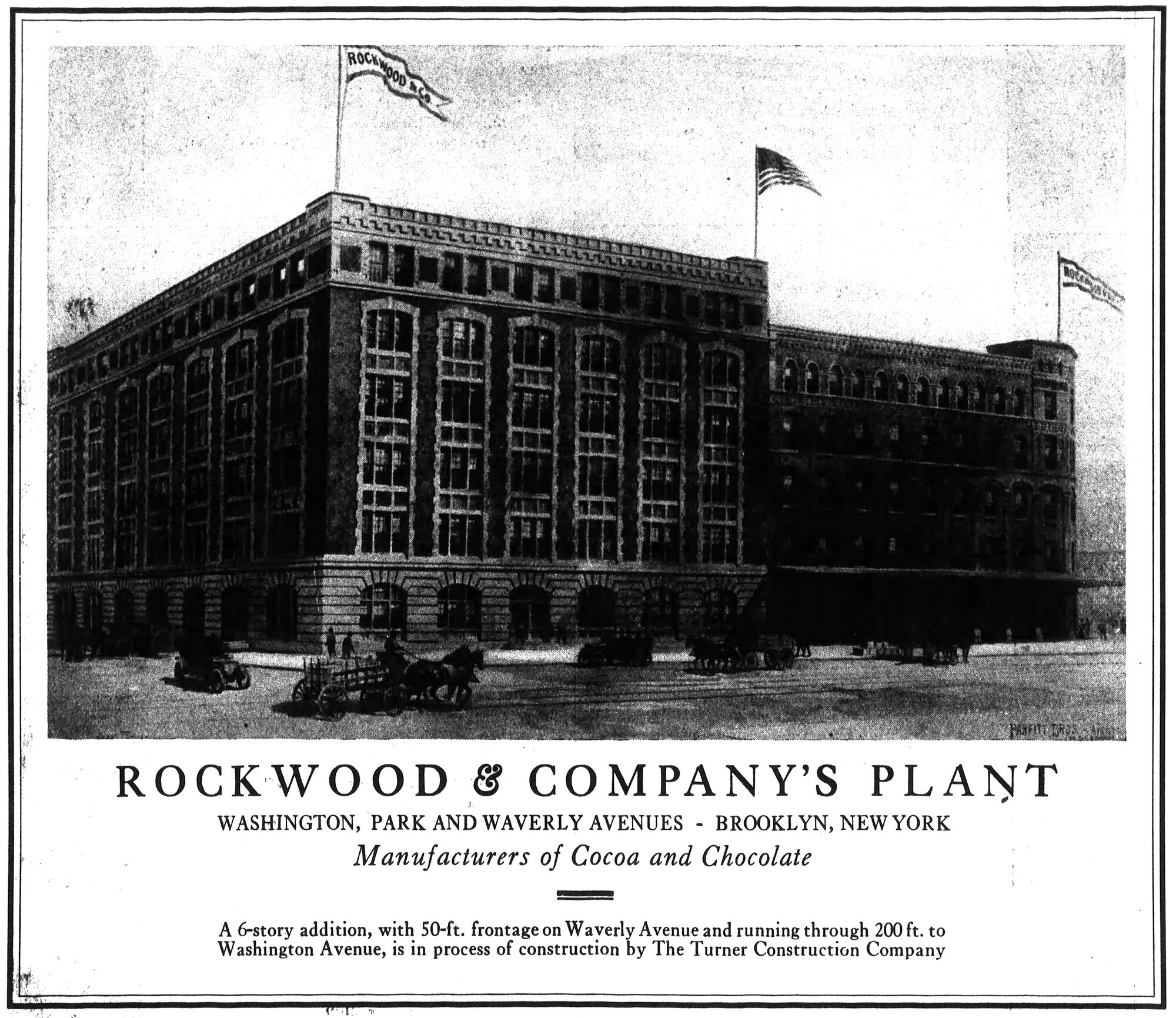
Turner, as the pre-eminent builder in this medium, was sought out for all of the largest projects. Within 10 years of its founding, the company had branches in Philadelphia, Boston and Buffalo. More would follow. In its first 15 years of business, Turner Construction completed $35 million in work, constructing buildings for many of the country’s largest corporations.
Henry Turner stepped down in 1941. His brother Archie took the helm of the company, but only for a few years — he died in 1946. The company leadership then went outside the family to former Admiral Ben Moreel, the creator of the Seebees. Four months later he stepped down, and the leadership of the company went to Henry Turner’s only son, Henry Chandlee Turner, Jr., known as Chan.
The company opened more branches in other cities and greatly expanded its work and scope. The company went public in 1972, trading on the New York Stock Exchange. By 1977, it broke $1 billion.
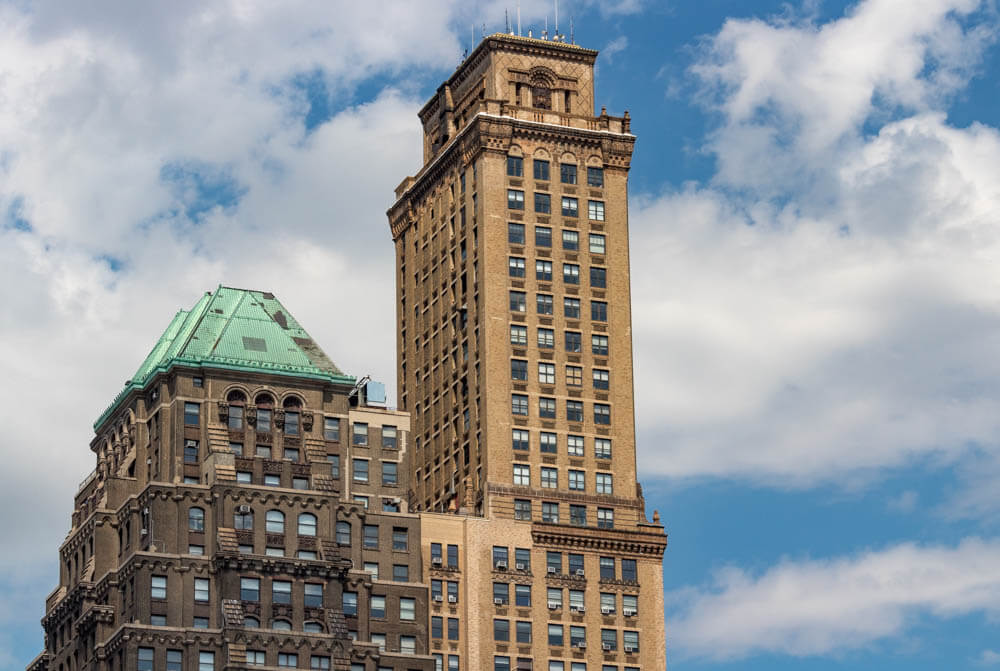
In 1999 the company was purchased by Hochtief, a German construction company. Today, Turner Construction has 46 offices in the United States and projects in more than 20 countries around the world. It averages 1,500 projects a year, with billions of dollars of work.
That’s a long way from the reinforced concrete vault built by a young Henry Turner in the basement of Pratt Institute’s Thrift Bank.
Turner Construction built some of the world’s most iconic buildings. The list is endless, so I’ve only included some of the company’s many Brooklyn buildings, concentrating on those built while Henry Turner was still alive.
Gair Buildings (six-plus) in Dumbo
Bush Terminal Buildings (22 buildings built by Turner) in Sunset Park
Austin Nichols Company in Williamsburg
Pioneer warehouses on Flatbush Avenue in Downtown Brooklyn
William Beckers Aniline and Chemical Works in Canarsie
Sperry Gyroscope Company on Flatbush Avenue in Downtown Brooklyn
Rockwood Chocolate Company Expansion in Wallabout
Brooklyn Army Terminal in Sunset Park
Army and Navy Building in the Brooklyn Navy Yard
South Brooklyn Naval Supply Base in Sunset Park
A. Schraeder’s Son on Atlantic Avenue in Fort Greene
American Can Company in Gowanus
Pirika Chocolate Factory in Crown Heights North
American Safety Razor Co. in Downtown Brooklyn
26 Court Street in Brooklyn Heights
Squibb Buildings (three) in Brooklyn Heights
Turner Towers in Prospect Heights
15-story warehouse in the Brooklyn Navy Yard
Schaefer Brewing Co. in Williamsburg
Related Stories
- From Meters to Eskimo Pies: A Reinforced Concrete Factory in Dumbo
- How Bananas Built Industry City — the Story of Sunset Park’s Bush Terminal
- The Austin, Nichols & Co. Building
Sign up for amNY’s COVID-19 newsletter to stay up to date on the latest coronavirus news throughout New York City. Email tips@brownstoner.com with further comments, questions or tips. Follow Brownstoner on Twitter and Instagram, and like us on Facebook.





What's Your Take? Leave a Comment